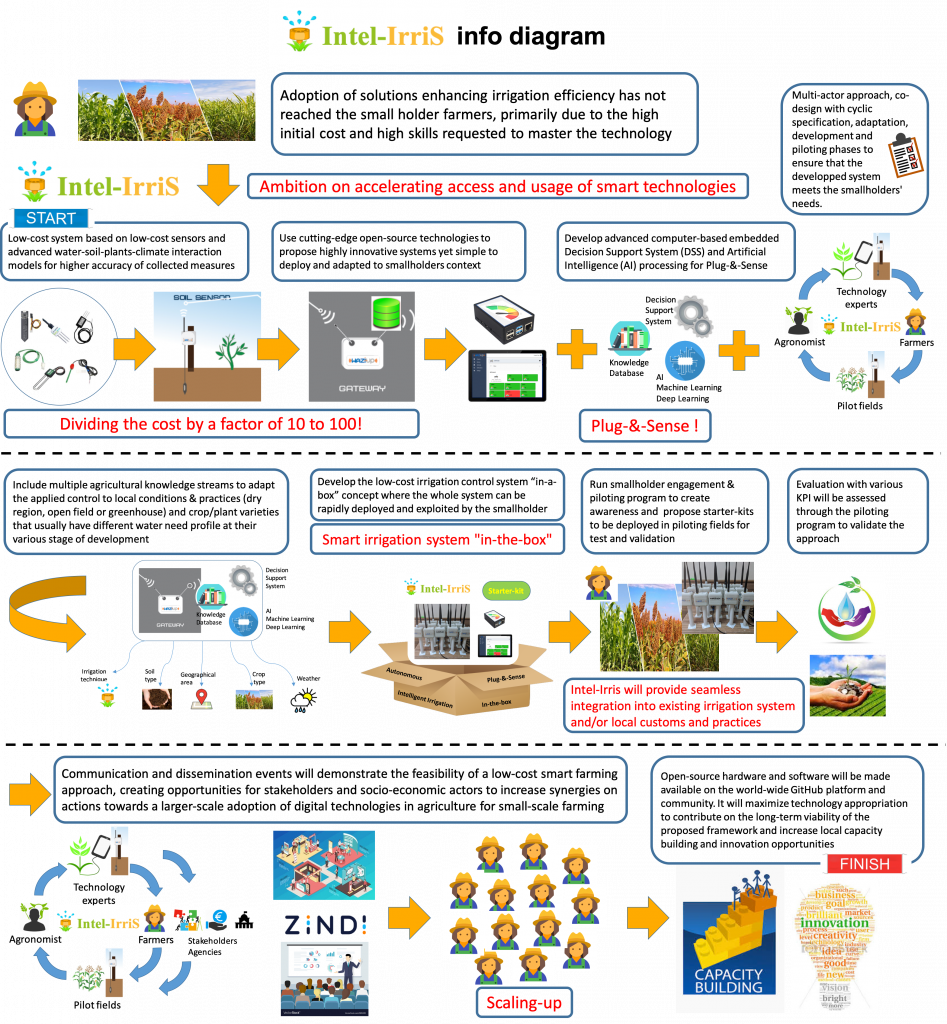Objectives
Intel-IrriS’s main objectives are summarized in the following illustration.
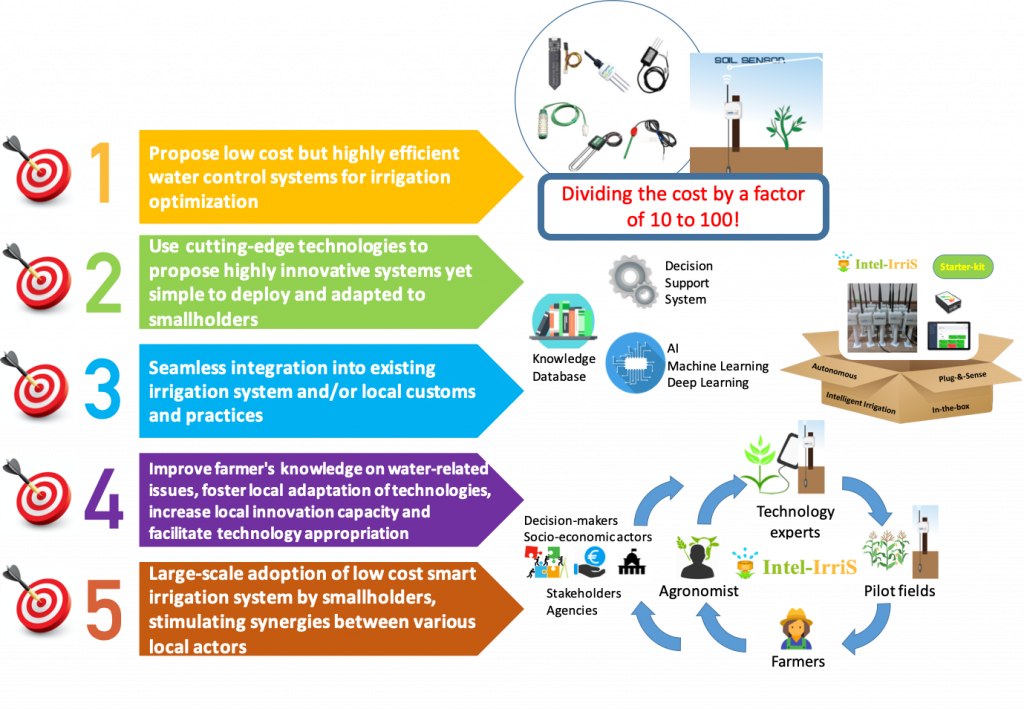
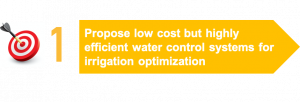
Existing high-end commercial systems are mostly based on very high cost professional sensor devices (usually coupled with costly soil mapping process) which dramatically limits the number of units that can be deployed. On the other hand, when adopting a low-cost design approach, one main issue is the reliability and accuracy of the collected data which is always low and can dramatically limit the efficiency of the deployed system. Intel-IrriS will propose a low-cost water control system but will improve its efficiency. It will do so (1) by enabling deployment of several complementary low-cost sensors – and not only one costly sensor for a large area – to take into account the soil spatial and water spatial & time variability at field scale, which is made possible by the much lower cost per unit, (2) by using automatic and remotely controlled procedures for advanced calibration of the different sensors to increase accuracy of collected measures so that our water-soil-plants-climate interaction models will provide increased accuracy on recommended actions and (3) by including agricultural models/knowledge with corrective & predictive analytics – from simple computer-based decision models to more advanced AI-based processing – to adapt the applied control to local conditions & practices (dry region, open field or greenhouse) and crop/plant varieties that usually have different water need profile at their various stage of development.
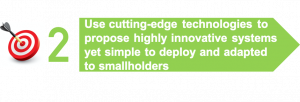
Objective 2 will implement the “Intelligent Irrigation in-the-box” concept by proposing a “plug-&-sense” sensor/control/actuator-based system using recent advances in enabling technologies such as Internet-of-Things (IoT), computer-based Decision Support System (DSS) and Artificial Intelligence (AI). While cost and efficiency are addressed by Objective 1, Objective 2 will ensure that the complexity seen by the final user (i.e. the smallholder) will be minimum. It will do so by designing a flexible, smart, autonomous, “plug-&-sense” in-the-box irrigation control system using long-range radio technologies (e.g. LoRa) that can be implemented and deployed in an incremental manner. Flexibility will be achieved by developing a generic platform allowing several variants to provide features from basic water-irrigation indicators to more advanced analysis of historical data and recommendations on actions to perform. With “plug-&-sense” approach, the deployed sensor devices will automatically transmit data to a central gateway where all predictive analytics and decision-making can be locally realized. In addition, the integration of DSS and disruptive AI-based processing (e.g. machine learning on agricultural spatio-temporal data series) of various agricultural data sources to propose crop/plant dependent recommendations can introduce higher level of intelligence into the proposed system to further contribute in providing the “plug-&-sense” property. The proposed system will be highly autonomous as the main operational mode of the irrigation control system is based on local intelligence and local interactions with the smallholders.

Objective 3 targets seamless integration which we consider as a required property for the proposed system to appear as a lean technology, key to large-scale adoption by smallholders. For instance, while the efficiency of an irrigation system can be achieved by changing the irrigation technique itself (e.g. surface, furrows, sprinklers, drip-watering, …) it is also desirable, when adoption by smallholders is targeted, to be able to add the smart irrigation control system on top of an existing irrigation method.
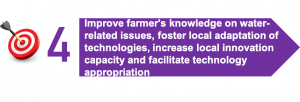
Objective 4 is realized through a participatory approach with a Smallholder Piloting Program of the innovative solutions in at least 20 small-scale farms to take into account region-dependent technical, agricultural, social, climatic and environmental aspects. The piloting program will run for 30 months. This will ensure that the proposed irrigation systems are well tailored for the specificities of the regional context. The Farmer Training Program will additionally propose adapted training sesssions for smallholders. Intel-IrriS will also develop an open source, generic framework that can be improved and maintained by local actors, stimulating the local ICT ecosystem. This open-source approach coupled with the adoption of standards will definitely provide a much higher level of interoperability than proprietary solutions. Finally, calls for Competitions and Challenges will be organized to raise awareness and boost local innovation and engagement from young entrepreneurs.

Objective 5 is to enable large scale adoption among smallholders for an efficient usage of natural resources of the territories. As main properties of the system are intelligence and flexibility, the irrigation control system can adapt its corrective & predictive analytic features according to local conditions and practices to increase water usage efficiency (i.e. ‘more crop per drop’). We expect this flexibility along with our Starter-kit Program to encourage large-scale adoption of our technology. However, large-scale adoption needs the help of a large number of local actors. Intel-IrriS will organize at least 10 dissemination events to raise awareness, showcase technologies, show opportunities and stimulating synergies between various local actors: scientists, experts, stakeholders, entrepreneurs/ companies, decision-makers, water & irrigation planners, government agencies,…
* * *
The following info diagram depicts the project’s approach to raise awareness, leverage on disruptive technologies, foster local adaptation of technologies, increase local innovation capacity and target large-scale adoption of low-cost smart irrigation systems by smallholders.
